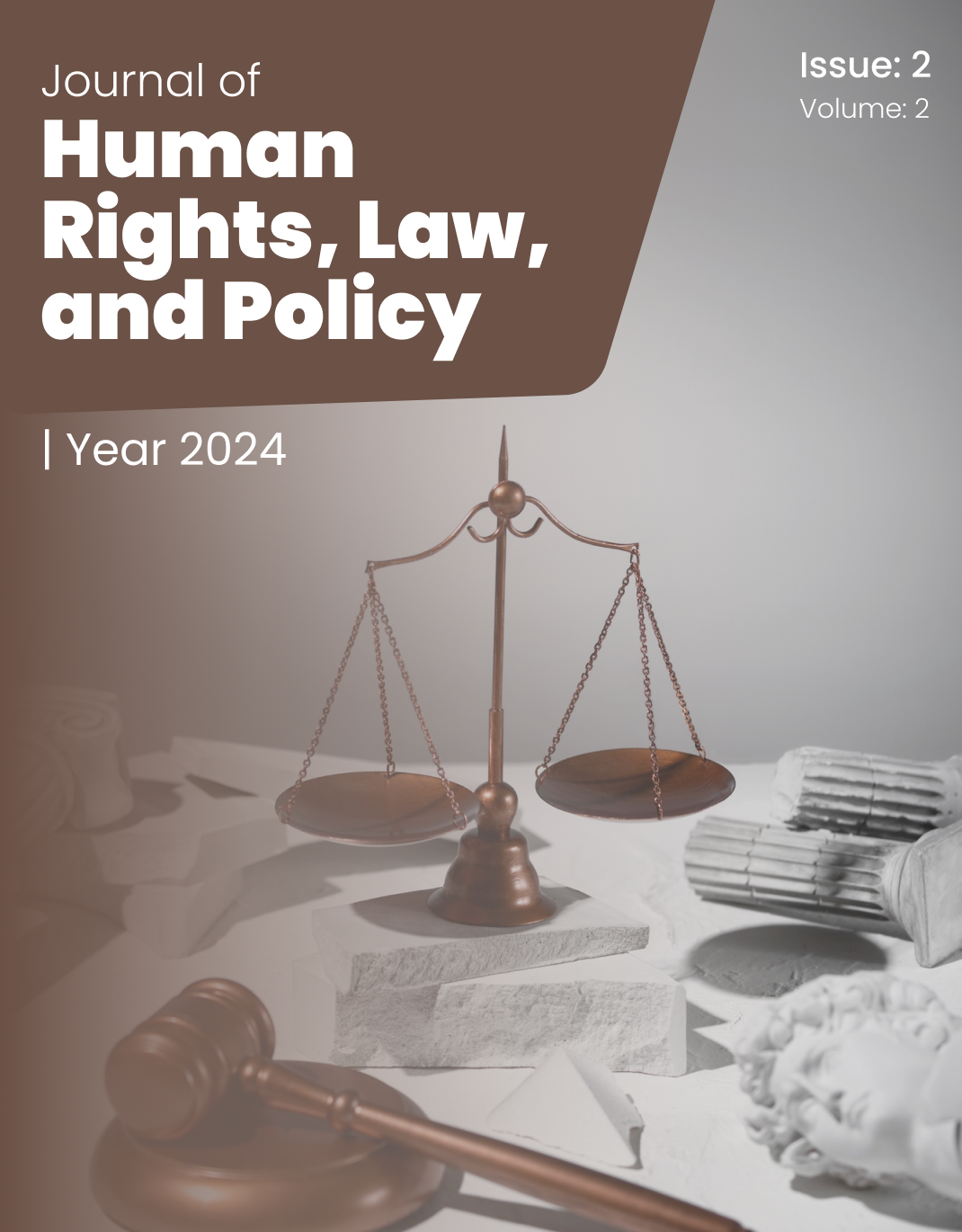Indicators of Eco-Displacement in National Legal Systems
Keywords:
Eco-displacement, Environmental law, Legal frameworks, Displacement governance, Policy innovation, Environmental justice, Qualitative researchAbstract
This study aims to identify and analyze key indicators of eco-displacement within national legal systems, focusing on legal frameworks, socio-environmental impacts, governance, and policy innovations to enhance protections for displaced populations. A qualitative research design was employed using semi-structured interviews with 20 legal experts, policymakers, and scholars based in Tehran. Participants were selected purposively to capture diverse perspectives. Data collection continued until theoretical saturation was reached. Interviews were audio-recorded, transcribed verbatim, and analyzed thematically using NVivo software to identify core themes and subthemes related to legal indicators of eco-displacement. Four main themes emerged: (1) Legal Frameworks and Definitions, highlighting the need for clearer, harmonized legal definitions and gaps in national and international laws; (2) Socio-Environmental Impacts, emphasizing the multifaceted human and ecological consequences of eco-displacement, especially for vulnerable populations; (3) Governance and Enforcement, underscoring challenges related to institutional capacity, judicial responsiveness, transparency, and stakeholder participation; and (4) Policy and Legal Innovations, reflecting emerging adaptive legal mechanisms, rights-based approaches, restorative policies, and the importance of legal education. These themes illustrate both persistent challenges and promising pathways for improving legal responses to eco-displacement. Eco-displacement poses complex legal and socio-environmental challenges requiring comprehensive and adaptive national legal frameworks. Clarifying legal definitions, integrating socio-environmental considerations, strengthening governance, and promoting innovative, rights-based policies are critical for enhancing protection and justice for displaced populations. The findings provide a foundation for legal reform and policy development to address eco-displacement more effectively.
Downloads
References
Agyeman, J., & Evans, B. (2004). ‘Just sustainability’: The emerging discourse of environmental justice in Britain? The Geographical Journal, 170(2), 155–164. https://doi.org/10.1111/j.0016-7398.2004.00112.x
Black, R., Bennett, S. R., Thomas, S. M., & Beddington, J. R. (2011). Climate change: Migration as adaptation. Nature, 478(7370), 447–449. https://doi.org/10.1038/478477a
Boas, I., Farbotko, C., & Adams, H. (2019). Climate migration myths. Nature Climate Change, 9(12), 901–903. https://doi.org/10.1038/s41558-019-0640-5
Cernea, M. M. (2000). Risks, safeguards and reconstruction: A model for population displacement and resettlement. Economic and Political Weekly, 35(41), 3659–3678.
Collins, K. (2017). Climate displacement and indigenous peoples in the Pacific: Challenges and opportunities. International Journal of Refugee Law, 29(4), 605–631. https://doi.org/10.1093/ijrl/eex031
Farbotko, C., & Lazrus, H. (2012). The first climate refugees? Contesting global narratives of climate change in Tuvalu. Global Environmental Change, 22(2), 382–390. https://doi.org/10.1016/j.gloenvcha.2011.11.014
Ferris, E. (2014). Disasters and displacement: Challenges, policies and people. Routledge.
Hilson, G., & Maconachie, R. (2017). Formalising artisanal and small-scale mining: Insights, contestations and clarifications. The Extractive Industries and Society, 4(3), 484–494. https://doi.org/10.1016/j.exis.2017.06.012
Jónsson, G. (2014). Migration, environment and climate change: Assessing the evidence. International Organization for Migration.
Kälin, W. (2010). Conceptualising climate-induced displacement. Oxford Journal of Legal Studies, 30(1), 121–146. https://doi.org/10.1093/ojls/gqp034
Kälin, W., & Schrepfer, N. (2012). Protecting people crossing borders in the context of environmental change: Normative gaps and possible approaches. The Brookings Institution.
Kelman, I. (2015). Climate change and the Sendai Framework for Disaster Risk Reduction. International Journal of Disaster Risk Science, 6(2), 117–127. https://doi.org/10.1007/s13753-015-0040-3
Martin, S. F. (2010). Climate change, migration, and governance. Global Environmental Politics, 10(3), 124–131. https://doi.org/10.1162/glep.2010.10.3.124
McAdam, J. (2012). Climate change, forced migration, and international law. Oxford University Press.
McLeman, R., & Hunter, L. (2010). Migration in the context of vulnerability and adaptation to climate change: Insights from analogues. Wiley Interdisciplinary Reviews: Climate Change, 1(3), 450–461. https://doi.org/10.1002/wcc.51
Nansen Initiative. (2015). Agenda for the protection of cross-border displaced persons in the context of disasters and climate change. The Nansen Initiative.
Oliver-Smith, A. (2009). Development-induced displacement: Problems, policies and people. In C. McDowell (Ed.), Human rights and development (pp. 28–49). Pluto Press.
Schlosberg, D. (2007). Defining environmental justice: Theories, movements, and nature. Oxford University Press.
Schmidt, T. (2013). Governance and environmental change: The institutional drivers of adaptive capacity. Environmental Politics, 22(3), 365–385. https://doi.org/10.1080/09644016.2013.769602
Williams, G. (2017). Participation and environmental governance: Critical reflections on environmental justice. Journal of Environmental Policy & Planning, 19(1), 28–41. https://doi.org/10.1080/1523908X.2016.1190204
Downloads
Published
Submitted
Revised
Accepted
Issue
Section
License

This work is licensed under a Creative Commons Attribution-NonCommercial 4.0 International License.

